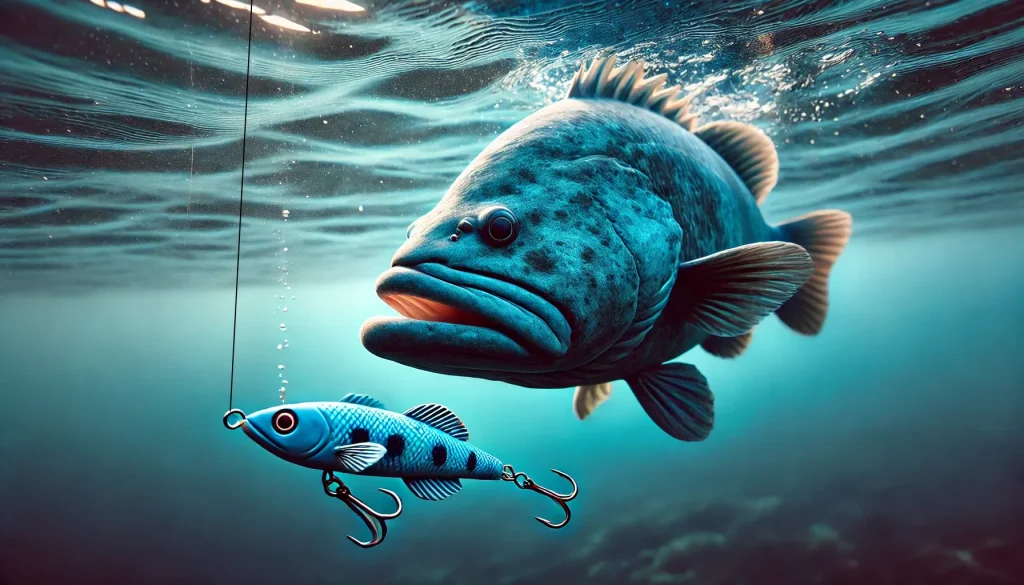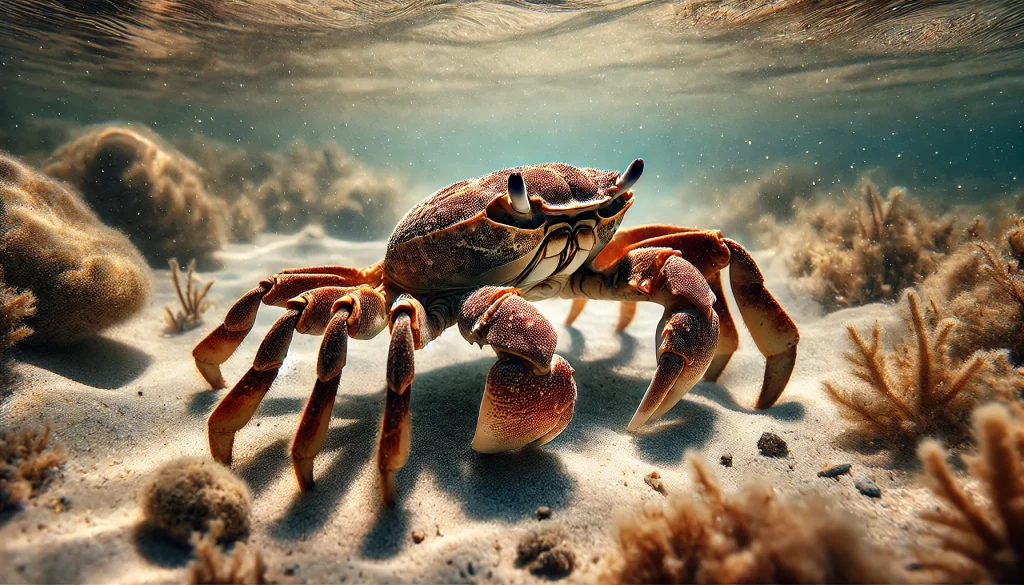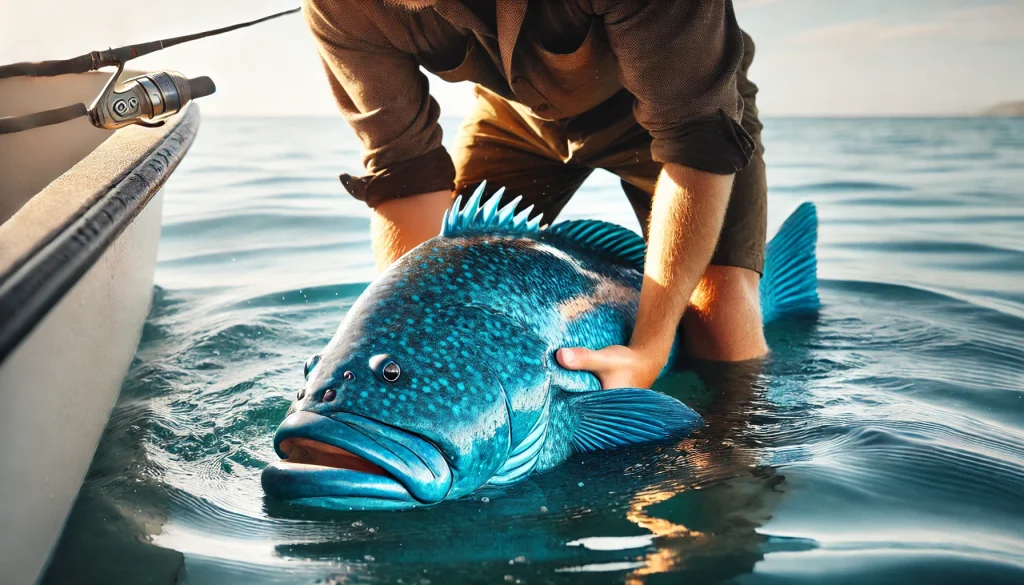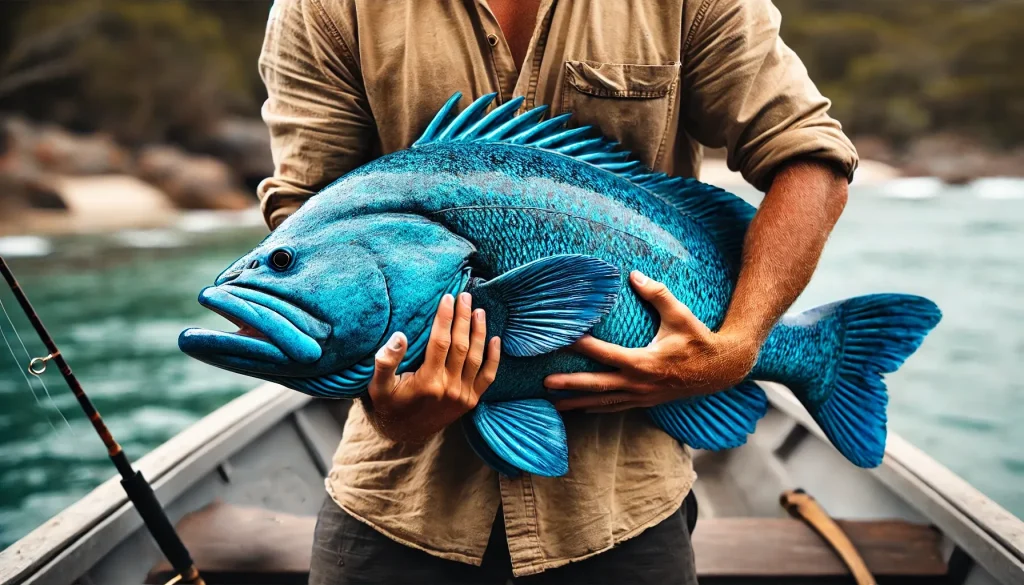If you’ve ever fished along the rocky coastlines of Western Australia, you’ve probably heard tales of the Western Blue Groper. This stunning, deep blue beauty is one of the most sought-after catches in our waters. Known for its strong fight and impressive size, it’s a fish that tests both patience and skill. Western Blue Groper can be found around reefs and rocky ledges, especially off the south coast. It’s a challenging target but definitely worth the effort if you’re up for the adventure.
Anglers love them not only for their size but also for the thrill of hooking into one – they’ll give your gear a good workout, and trust me, you don’t want to risk losing one due to poor-quality tackle. That’s why it’s important to have strong, reliable fishing lines from ReelBoss. Our tough-as-nails lines can handle the groper’s powerful runs, ensuring you’re ready when the battle begins.
If you’re planning to target this long-lived species, knowing a bit more about their habits and how to approach them will give you an edge. Ready to learn more about how to land one of these Aussie icons? Read on!
Western Blue Groper vs. Eastern Blue Groper: Key Differences
While both the Western Blue Groper and the Eastern Blue Groper share similar names and a striking blue appearance, they are distinct species with key differences. The Western Blue Groper (Achoerodus gouldii) is typically found off the coast of Western Australia, particularly along the south coast and south west. In contrast, the Eastern Blue Groper (Achoerodus viridis) is more common in the waters of New South Wales and Queensland.
Size is another factor that sets them apart. The Western Blue Groper grows larger, often reaching up to 1.5 meters and over 40 kg, while the Eastern species tend to be smaller. Habitat preferences differ as well: the Western Blue Groper prefers deeper rocky reefs, whereas the Eastern Blue Groper is often found in shallower, rocky areas close to shore.
Anglers in Western Australia must follow stricter regulations when targeting Achoerodus gouldii due to its slow-growing nature, making size limits and bag limits critical for conservation.
Understanding these differences is important for anglers fishing on both coasts, ensuring they respect the proper regulations and use the best techniques for each species.
Understanding Western Blue Groper Habitat and Fishing Locations

If you’re keen to hook into a Western Blue Groper, knowing where to find them is half the battle. These fish love rocky areas, reefs, and kelp beds, making the rugged coastlines of Western Australia prime real estate for a good catch. Popular spots for chasing gropers include the south coast and south west, where the reef systems provide perfect cover for these fish to feed and shelter.
One of the best-known groper hot spots is the Abrolhos Islands, just off the coast of Geraldton. The crystal-clear waters and abundant reef structures make it a groper haven, and it’s worth the trip if you’re looking for a serious challenge. Land-based anglers also have a shot at them, particularly along the rocky shores of Albany and Esperance. Just be prepared to put in the hard yards, as these fish are known to hang out in deeper waters near steep drop-offs.
Whether you’re fishing from shore or boat, finding the right habitat is key. Target these areas, and you’ll increase your chances of encountering a Western Blue Groper in no time.
The Life Cycle: Slow Growing and Long-Lived
The Western Blue Groper isn’t just a tough fish to catch – it’s also slow-growing and long-lived, making it a truly special species. In fact, these gropers can live for several decades, with some reaching over 70 years old! They grow slowly, so when you see a large groper, you’re looking at a fish that’s likely been around for quite a while.
Because of their slow-growing nature, conservation efforts are crucial to ensure their populations remain healthy. Overfishing can significantly impact these fish, as it takes many years for them to reach their larger sizes and reproductive maturity. This is why there are strict regulations in place, like size limits and daily bag limits, to help protect the species and ensure future generations of anglers can experience the thrill of catching one.
By respecting these rules, we can help maintain the balance in our oceans, keeping the Western Blue Groper around for years to come. Understanding their unique life cycle gives you an even greater appreciation for landing one of these Aussie legends!
Western Blue Groper Diet and Feeding Habits

When it comes to understanding the Western Blue Groper, their diet is a crucial piece of the puzzle. These fish aren’t picky eaters, but they do have a taste for certain critters. They primarily feed on crustaceans like crabs and crayfish, along with mollusks such as mussels and sea snails. Their powerful jaws are built for crushing shells, so they’ll often forage around rocky reefs and kelp beds where these food sources are abundant.
Knowing what they eat is a huge advantage for anglers. If you’re chasing a groper, you’ll want to use bait that mimics their natural diet. Crabs and fresh prawns are top choices, and many anglers have great success using squid as well. The key is to present something that looks natural to them, which increases your chances of a bite.
By understanding their feeding habits, you can tailor your approach, making sure you’ve got the right bait to entice this bottom-dwelling giant. The more you know about their diet, the better your chances of landing one.
Size Limits, Bag Limits, and Fishing Regulations

In Western Australia, there is a set size limit for catching Western Blue Groper. You’ll need to release any fish smaller than 500mm, as they haven’t yet reached reproductive maturity. The maximum size is also important—gropers larger than 600mm must be released as well, as they are the key breeders in the population.
There’s also a daily bag limit to follow, allowing you to take home only one Western Blue Groper per day. These regulations aren’t just about compliance; they’re about sustainability and ensuring future generations of anglers get the same opportunities to target these incredible fish.
If you’re targeting the Western Blue Groper, it’s important to be aware of the fishing regulations designed to protect this species. Due to their slow-growing and long-lived nature, strict rules are in place to prevent overfishing and ensure their populations remain healthy.
By sticking to the size limits and bag limits, you’re helping to preserve one of Australia’s most iconic species for years to come.
Techniques for Catching Western Blue Groper

Catching a Western Blue Groper requires patience, the right gear, and knowing your environment. If you’re land-based, targeting rocky ledges or deep gutters along the coastline is your best bet. Gropers tend to lurk in areas with plenty of cover, like reefs or kelp beds, so casting near these structures is key. Use a sturdy rod and reel setup, paired with heavy-duty line, as these fish are known to put up a serious fight. ReelBoss fishing lines are a great choice for handling their powerful runs.
For those fishing by boat, anchoring over rocky reefs is the way to go. Dropping your bait directly into these habitats will increase your chances of attracting a groper. In both cases, the right bait—like crabs, prawns, or squid—is crucial, as it mimics their natural prey. Be ready for a hard battle once hooked, as they’ll try to head for cover immediately.
Whether you’re casting from shore or a boat, understanding where these fish hide and how they behave will set you up for success.
Best Times and Seasons for Fishing
Timing is everything when chasing a Western Blue Groper. While they can be caught year-round in Western Australia, certain seasons offer better odds. The cooler months, especially late autumn and winter, are prime times for targeting gropers. During these months, the water conditions are perfect, and gropers tend to be more active, feeding heavily around reefs.
Water temperature also plays a role. Gropers prefer cooler, deeper waters, which is why the south coast and south west are such productive regions, especially during these seasons. Early mornings or late afternoons are ideal times to fish, as these fish are more likely to be out hunting for food.
Keep an eye on the tides as well, with rising tides being the most favorable. Gropers are more active when the water is moving, as it stirs up their prey, making them easier to catch.
Plan your trips around these conditions, and you’ll be in a much better position to land that prized groper!
Conservation and Responsible Fishing Practices
As anglers, it’s our responsibility to ensure the Western Blue Groper remains a thriving species in our waters. These fish are slow-growing and long-lived, which means overfishing can seriously impact their populations. Following the size limit and daily bag limit regulations is not just about complying with the law—it’s about preserving this iconic fish for future generations. By sticking to the size limits, we allow smaller, immature gropers to grow and reproduce, helping maintain a healthy population. Larger gropers, which are often the main breeders, need to be released as they play a crucial role in replenishing the species. The daily bag limit ensures that we only take what we need, reducing the pressure on these vulnerable fish.
Responsible fishing also means practicing proper catch-and-release techniques when necessary. Handling the fish gently and minimizing time out of water increases their chances of survival after release.
Every angler can make a difference by fishing sustainably and respecting these regulations. Let’s do our part to protect the Western Blue Groper and keep our fisheries healthy for years to come!
